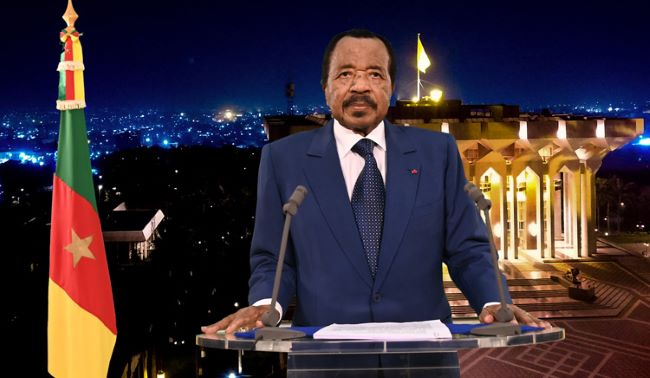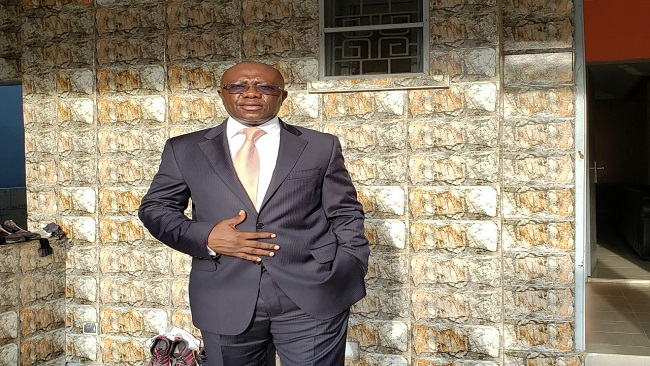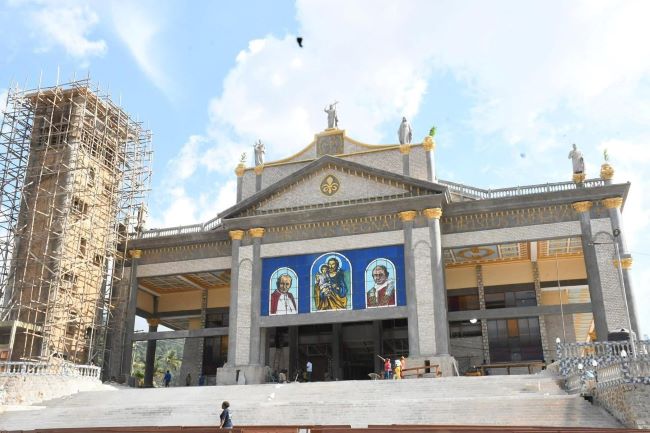Categories
Recent Posts
- Football: Panthère du Ndé Wins Cameroon Cup 2025
- Fifa brings in new £45 ticket for 2026 World Cup
- President Sisiku Ayuk Tabe, top aides to appear before the Supreme Court
- Pressure mounts on Biya as speculation grows over possible replacement of Ngute
- 2025 is the year when Biya’s long rule finally lost its last convincing justification
Archives
- December 2025
- November 2025
- October 2025
- September 2025
- August 2025
- July 2025
- June 2025
- May 2025
- April 2025
- March 2025
- February 2025
- January 2025
- December 2024
- November 2024
- October 2024
- September 2024
- August 2024
- July 2024
- June 2024
- May 2024
- April 2024
- March 2024
- February 2024
- January 2024
- December 2023
- November 2023
- October 2023
- September 2023
- August 2023
- July 2023
- June 2023
- May 2023
- April 2023
- March 2023
- February 2023
- January 2023
- December 2022
- November 2022
- October 2022
- September 2022
- August 2022
- July 2022
- June 2022
- May 2022
- April 2022
- March 2022
- February 2022
- January 2022
- December 2021
- November 2021
- October 2021
- September 2021
- August 2021
- July 2021
- June 2021
- May 2021
- April 2021
- March 2021
- February 2021
- January 2021
- December 2020
- November 2020
- October 2020
- September 2020
- August 2020
- July 2020
- June 2020
- May 2020
- April 2020
- March 2020
- February 2020
- January 2020
- December 2019
- November 2019
- October 2019
- September 2019
- August 2019
- July 2019
- June 2019
- May 2019
- April 2019
- March 2019
- February 2019
- January 2019
- December 2018
- November 2018
- October 2018
- September 2018
- August 2018
- July 2018
- June 2018
- May 2018
- April 2018
- March 2018
- February 2018
- January 2018
- December 2017
- November 2017
- October 2017
- September 2017
- August 2017
- July 2017
- June 2017
- May 2017
- April 2017
- March 2017
- February 2017
- January 2017
- December 2016
- November 2016
- October 2016
- September 2016
- August 2016
- July 2016
- June 2016
Featured
 2025 is the year when Biya’s long rule finally lost its last convincing justification
2025 is the year when Biya’s long rule finally lost its last convincing justification  Young Cameroonians: Build social capital to succeed
Young Cameroonians: Build social capital to succeed  Eulogy for HRH Nfor Professor Teddy Ako of Ossing
Eulogy for HRH Nfor Professor Teddy Ako of Ossing  Will Fr. Paul Verdzekov recognize the refurbished and rededicated Cathedral in Bamenda were he to return today?
Will Fr. Paul Verdzekov recognize the refurbished and rededicated Cathedral in Bamenda were he to return today?  Cameroon apparently under a de facto federalism
Cameroon apparently under a de facto federalism
Most Commented Posts
 4 Anglophone detainees killed in Yaounde
4 Anglophone detainees killed in Yaounde
18 comments Chantal Biya says she will return to Cameroon if General Ivo Yenwo, Martin Belinga Eboutou and Ferdinand Ngoh Ngoh are sacked
Chantal Biya says she will return to Cameroon if General Ivo Yenwo, Martin Belinga Eboutou and Ferdinand Ngoh Ngoh are sacked
13 comments The Anglophone Problem – When Facts don’t Lie
The Anglophone Problem – When Facts don’t Lie
12 comments Anglophone Nationalism: Barrister Eyambe says “hidden plans are at work”
Anglophone Nationalism: Barrister Eyambe says “hidden plans are at work”
12 comments Largest wave of arrest by BIR in Bamenda
Largest wave of arrest by BIR in Bamenda
10 comments
Latest Tweets
Featured
-

Football: Panthère du Ndé Wins Cameroon Cup 2025
-

Fifa brings in new £45 ticket for 2026 World Cup
-

President Sisiku Ayuk Tabe, top aides to appear before the Supreme Court
-

Pressure mounts on Biya as speculation grows over possible replacement of Ngute
-

2025 is the year when Biya’s long rule finally lost its last convincing justification
-

Armed Mbororo tribesmen killed 8 in Southern Cameroons’ new war
-

Southern Cameroons Crisis: Atanga Nji Boys abduct 8 people en route to Kumbo
© Cameroon Concord News 2025
21, July 2023
Camair-Co slated for review as per latest IMF bailout 0
Camair-Co is amongst four state-owned enterprises to be placed under a performance contract by November 2023 in line with Cameroon’s commitment to improve the viability of its public enterprises under the supervision of the International Monetary Fund (IMF).
This is according to the IMF’s Fourth Review in July 2023 of its Extended Credit Facility (ECF) and Extended Fund Facility (EFF) to Cameroon, which allowed for an immediate disbursement of about USD73.6 million to the West African country. The latest allocation brings total IMF disbursements to Cameroon under the arrangements to about USD493.6 million.
While the medium-term outlook for the country remains positive, provided reforms continue, the IMF called for structural reforms to be accelerated. According to the IMF, the Cameroonian government has committed to strengthening public enterprise management and the performance of its SOEs to improve service delivery and limit fiscal risks.
To this end, diagnostic studies have been completed at four state enterprises – the technically-bankrupt national carrier Camair-Co; the Port Authority of Douala (PAD); Cameroon Telecommunications (CAMTEL); and Cameroon Water Utilities Corporation (CAMWATER). In the first phase, these companies will be placed under performance contracts by November 2023 which will specify their obligation to meet a public service mission, the evaluation of unit costs (as a basis for paying subsidies) and quality indicators to be published with evaluation reports.
During the second phase, the government will gradually reduce subsidies to underperforming public enterprises. Large industrial SOEs, notably PAD, will be listed on the Central African Stock Exchange (BVMAC). A planned listing of Camair-Co is not mentioned in the IMF report.
Still, as reported, the airline’s possible listing was alluded to in a report of a technical committee for the rehabilitation of SOEs (Commission Technique de Réhabilitation des Entreprises du Secteur Public – CTR). In 2020, Cameroon’s president, Paul Biya, also told the government to urgently develop a plan that restructures and revives Camair-Co to facilitate selling off 51% to a strategic private investor.
According to the CTR, Camair-Co needs to clean up its balance sheet and consolidate its financial standing before any divestment. To settle part of its liabilities, it would transfer its overall debt as of December 31, 2020, to the Cameroonian state and undergo financial restructuring. The government would then set up a civil aviation fund to compensate the state-owned carrier for losses on domestic routes.
Yet the IMF recommends that government subsidies to SOEs be better prioritised. “As part of the diagnostic studies of each public enterprise, the authorities will assess the subsidies with the aim of reducing those allocated to the weakest performance. In this context, the authorities have initiated a study to be finalised in November 2023 of all the approved or administered prices of the products of public enterprises with the aim of reviewing, if necessary, their formula for determining prices and/or their possible liberalisation,” it stated.
Camair-Co has been loss-making since its inception in 2011. It ended 2021 with negative equity of XAF115 billion Central African francs (USD190.4 million) against a share capital of XAF21.8 billion (USD36.1 million), meaning the airline is technically insolvent.
Camair-Co was the subject of a recovery plan proposed by Boeing Consulting in 2016, which included settling its debt at the time, injecting new capital, resizing its network, and modernising its fleet, but the plan was never implemented.
The airline has a fleet of nine aircraft, of which only five are in service. The fleet includes two B737-700s (of which only one is active); one parked B767-300ER; two DHC-8-Q400s, two parked MA-60s, one EMB-135LR and one EMB-145LR (both wet-leased), according to the ch-aviation fleets advanced module.
Source: ch-aviation